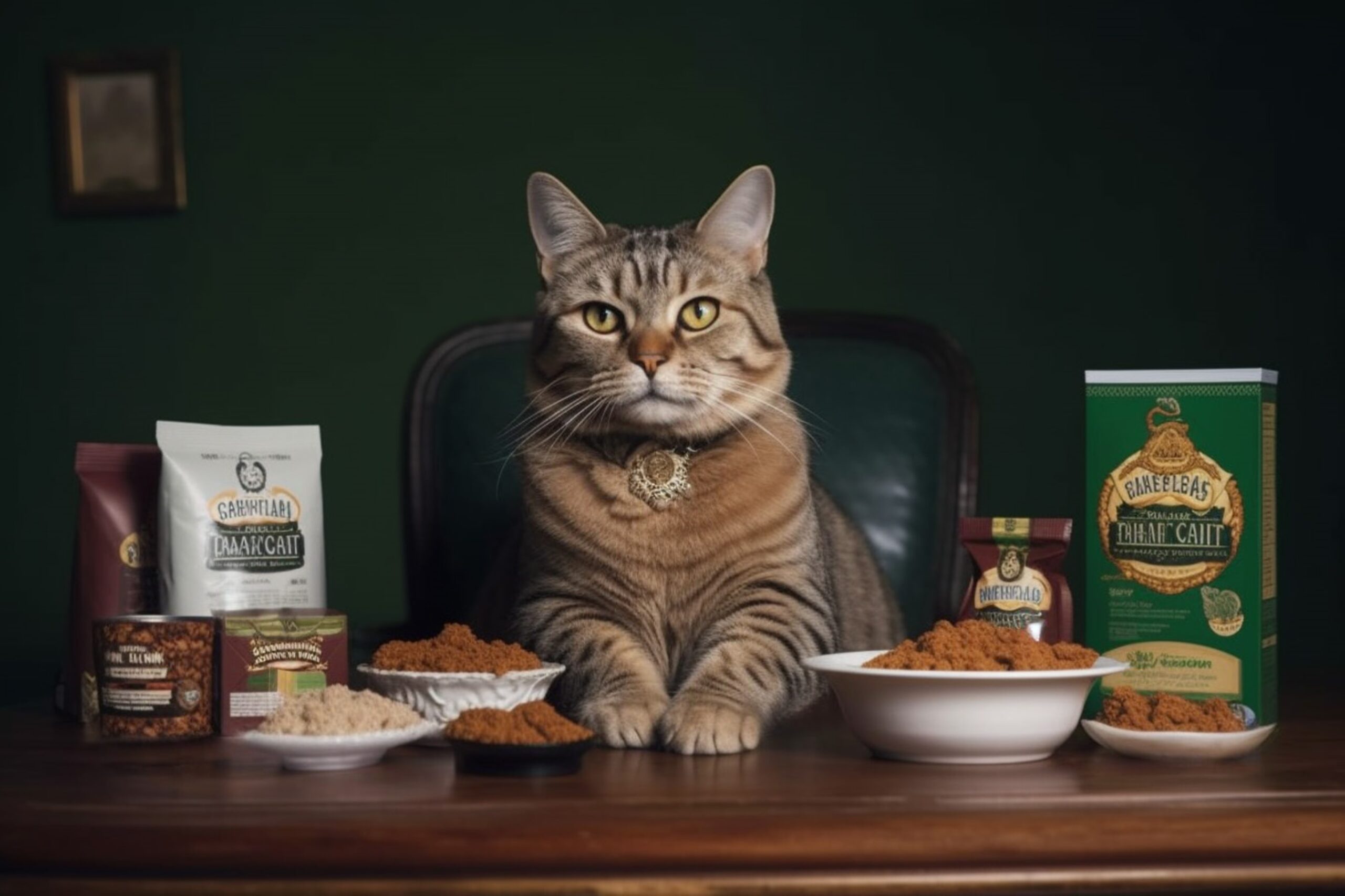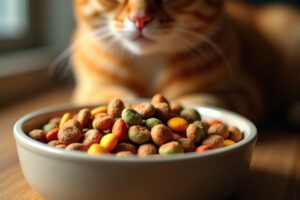
Many cat owners currently seek details about foods with low phosphorus content for their pets. Pet owners who have cats must control their feline diet when their cats reach senior age or develop chronic kidney disease (CKD). The health of your cat depends heavily on phosphorus regulation which produces significant benefits for their overall wellness.
This guide provides complete knowledge about low phosphorus foods for cats by explaining phosphorus importance and presenting suitable food choices for various feline requirements. Through this guide you will achieve the necessary skills to provide your cat with the proper diet which aligns with their health needs.
Why Should You Care About Phosphorus in Your Cat’s Diet?
Most food types contain phosphorus as a mineral substance at different levels. The body needs phosphorus for bone health and cellular operations but excessive amounts become dangerous for cats with kidney problems or kidney disease.
Studies conducted by the International Renal Interest Society (IRIS) show that elevated phosphorus levels in cats can speed up their kidney failure process. The management of feline kidney health requires close monitoring and reduction of phosphorus intake as a vital practice. Healthy aging cats alongside those with normal kidneys may achieve better kidney performance by consuming lower amounts of phosphorus.
Signs Your Cat May Need a Low Phosphorus Diet
You need to determine if your cat requires eating foods with low phosphorus content. Older pets along with cats who have kidney problems should display these essential warning signs.
- The signs to watch are regular urination in combination with excessive water intake
- Weight loss occurs even if your cat maintains its food intake or consumes more food.
- The condition includes both reduced eating behavior and decreased food consumption.
- Vomiting
- Your cat shows signs of fatigue when it appears unusually tired.
- The smell of uremic breath indicates poor breath quality.
Low phosphorus diet consideration can be determined by your veterinarian after you report any signs from the listed symptoms.
The Basics of Low Phosphorus
What qualifies as low phosphorus?
The term “low phosphorus” on food labels indicates that the phosphorus content in dry matter is under 0.5%. The phosphorus content of moderate food options should fall between 0.5% and 0.8%.
Natural kidneys of cats with chronic kidney disease (CKD) or other health problems benefit from special foods designed to minimize phosphorus through ingredient replacements of organ meats with lean proteins.
The Best Choices of Low Phosphorus Foods Suitable for Cats
Very few restrictions apply to a cat’s low phosphorus diet when selecting appropriate menu options that are also cost-effective and simple to prepare. The following list presents the most suitable choices according to their categories for easy reference.
- Wet (Canned) Cat Foods
The veterinary community supports using wet food as a suitable option for cats on low phosphorus diets because these products contain less phosphorus while providing hydration benefits. The process of flushing toxins becomes more important for cats with kidney disease because they need increased water intake.
Best Low Phosphorus Wet Foods
|
Brand |
Product Name |
Phosphorus (% Dry Matter) |
|
Hill’s Prescription |
Kidney Care k/d |
0.38% |
|
Royal Canin |
Renal Support D |
0.42% |
|
Weruva |
Paw Lickin’ Chicken |
0.59% |
|
Tiki Cat |
Velvet Mousse (Chicken & Egg) |
0.63% |
These brands are known for their renal-friendly recipes and premium ingredients. While prescription diets like Hill’s and Royal Canin are specially created for medically compromised cats, Weruva and Tiki Cat offer more accessible, over-the-counter alternatives.
- Dry Cat Foods
While wet foods are often preferred, there are also low phosphorus kibble options available for pet parents who prefer the convenience of dry food.

Best Low Phosphorus Dry Foods
|
Brand |
Product Name |
Phosphorus (% Dry Matter) |
|
Blue Buffalo |
Natural Veterinary Diet Kidney |
0.39% |
|
Hill’s Prescription |
Kidney Care k/d Dry |
0.44% |
- Homemade Meals
Home cooking allows pet owners to maintain full control of their cat’s food ingredients and phosphorus content. You need to collaborate with a feline nutritionist or veterinarian to guarantee your homemade diet provides complete nutritional value.
Low Phosphorus Ingredients for Homemade Meals
The recommended protein sources for cats include chicken breast and turkey meat without skin and bones.
- Egg whites (an excellent protein source with minimal phosphorus)
- White rice or plain pasta (as carbohydrate fillers)
- Zucchini which has been cooked and peeled into small dice pieces serves as a vegetable option.
Avoid High-Phosphorus Ingredients:
- Organ meats (liver, kidney, etc.)
- Fish like salmon and tuna
- Dairy products
The Most Frequently Asked Questions about Diets with Low Phosphorus Content
- Do all cats have the ability to consume foods that contain low phosphorus content?
A low phosphorus diet provides safe nutrition for all cats although its main purpose is to treat conditions such as CKD. Cats who do not have the mentioned conditions need to consume phosphorus at balanced levels to support bone development and overall wellness. Contact your veterinarian for dietary guidance related to alimentation planning for your healthy cat.
- Are prescription diets worth it?
Prescription renal diets exist to treat kidney disease symptoms while also slowing down disease progression. Research has shown that although these diets have higher costs they successfully extend the life quality of cats suffering from CKD.
- Can treats be low phosphorus?
Absolutely! Freeze-dried chicken breast and plain-cooked egg whites serve as examples of appropriate renal-friendly treats for cats. Hill’s and Royal Canin provide prescription low phosphorus treats among their product line.
Tips for Transitioning to a Low Phosphorus Diet
- A gradual introduction of new food to your cat’s diet prevents digestive problems and food rejection. Here’s how to do it right:
- Introduce new food by combining small amounts with regular food during a 7–10 day period while increasing the new food ratio daily.
- A slight warming of the food will improve its smell and attract fussy eaters.
When introducing the new diet to your cat give them praise or several more minutes of playtime as rewards to show them the new diet is acceptable.
Foods to Avoid Entirely
Your cat’s health requires you to stay away from foods that contain high levels of phosphorus which commonly appear in traditional diet choices.
- Organ meats such as liver and heart
- Some raw diets contain bone meals and ground bones as ingredients.
- Fish (especially sardines and salmon)
- Dairy products like cheese
Wrapping Up
The process of diet management for cats becomes challenging when you need to provide them with specialized foods such as low phosphorus diets. The process of giving your feline companion the best care becomes easier when you have proper information and resources at hand.
Remember, every cat is different. You must always work with a veterinarian for designing nutritional plans that address your pet’s complete health status. Your hunt includes two components: finding diet recipes suitable for renal conditions and exploring new product brands. The resources we recommend can be found in our list.
Taking care of your cat requires dedicated love which brings happiness to your pet through your efforts. These particular foods which contain low phosphorus foods represent an essential financial commitment for your pet’s health.

Leave a Reply